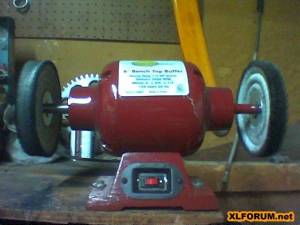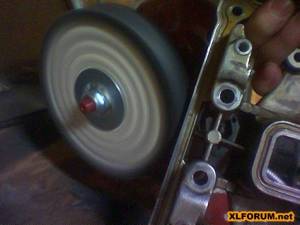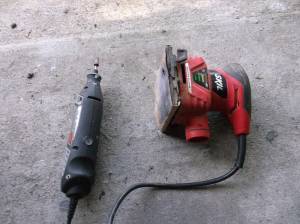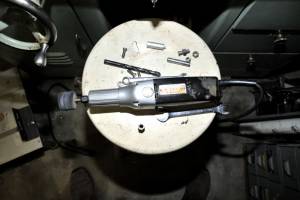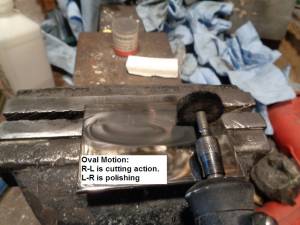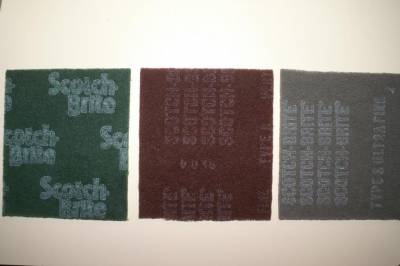Table of Contents
This is an old revision of the document!
REF: Tools - 156
Buffers and Accessories
Buffing Machines
See also Polishing Aluminum and Stainless Steel in the Sportsterpedia.
Using a Benchtop Buffer
A bench buffer is great if you can take the part to it. That does limit it's use somewhat however.
Keep seperate buffing wheels so you don't cross contaminate polishing compounds.
Apply the polishing compound onto the wheel. It doesn't take much.
You can tell when you need to apply more from how clean the polish surface starts becoming. 1)
Using a Dremil Rotary Tool (or similar)
The Dremel type rotary tools will run up to over 25,000 RPMs.
But you don't want to try polishing metals at those speeds.
It is best to start with around 8,000 RPMs and adjust up depending on the size of the polishing pads.
The smaller pads can run at faster speeds. Most of the pads come in either 3/8“ or 7/8” OD.
Obviously the 7/8“ pads last much longer if you run them at the right speed.
Top speed on them wouldn't be much over about 15,000 RPMs or the wool polishing wheels will start flying apart on you. 4)
These are nice for getting into small areas but they can leave swirlies that have to be rubbed out. 5)
You can control the swirls if you use the wool polishing pads and the buffing compound.
Try running it at little slower speed if it is still leaving swirls. Keep the pressure real light.
Let the compound do the work. Move slowly back and forth with the pads.
Straight line movement just like sanding wood grain and there should not be any swirls at all. 6)
The 1” buffing bits will fit most places and the small 3/8“ felt bullet shapes fit into most screw recesses. 7)
Using an Electric Drill
Use the biggest wheel that will fit the mandrel you have since the smaller ones can streak.
You can use 2” and 4“ wheels on an electric drill at about 2000 RPM. 11)
Those wheels won't fit into all the little spaces, so this is also limiting.
A felt buffing pad works well (better than a thumb and wider than a dremel, so no little swirls). 12)
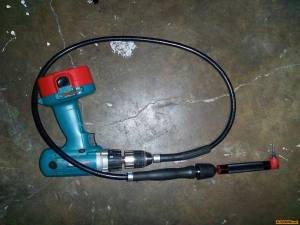 |
| Flexible drill attachment 13) |
Wheels / Pads
Dremil Type Polishing Pads
You can buy Dremel wool polishing pads with mounting shafts from a home improvement or hardware store.
They twist onto the shaft like a nut on a bolt.
The shaft doesn't go all the way through the pad.
Eventually and after heavy use, the pads will split down the middle or twist the center out and fly apart. 14)
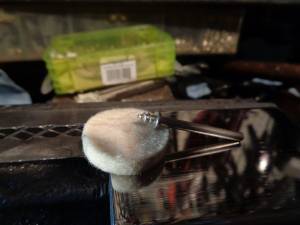 | 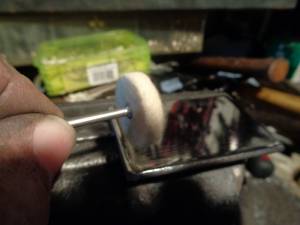 |
| Dremil polishing pad mounted to a threaded shaft 15) | |
To help keep the pad from spinning off the shaft, you can mount it to a metal cutting wheel mandrel.
Add a small washer over the attaching screw and snug it down against the pad.
It doesn't have to be real tight.
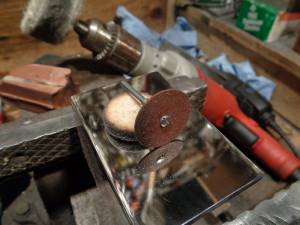 | 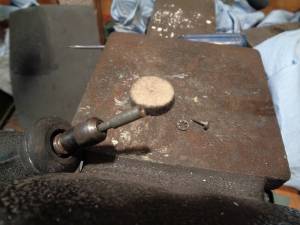 |
| Dremil pad mounted to a cutting wheel mandrel 16) | |
The mandrel and polishing shafts are re-usable.
Alternately, you can save all the worn out and broken shafts from Dremel rasps and small grinding disks.
Then, re-use them as a mount for the wool polishing pads using epoxy to keep them on.
The old grinding disk axles can be pushed all the way through the polishing pads and they don't split down the middle so bad. 17)
Once the pad is worn out, just install another one on it.
To make the pads last longer, you can use JB Weld epoxy to mount them on the original shafts. 18)
Buying in bulk:
For about the same price as you pay for 6 of the Dremil pads, you can order a big bag of 100 polishing pads (including a few mandrels) online (Amazon, Ebay and etc.).
They are the same pads, same quality, and last the same. 19)
Below are some wool polishing pads that were glued to mandrels.
The larger ones are the 7/8” pads. They will last a very long time mounted with epoxy.
But you need to let them cure over night before use for best results.
The two smaller ones laying down behind them are 3/8“ pads.
They are good for getting in tight places. 20)
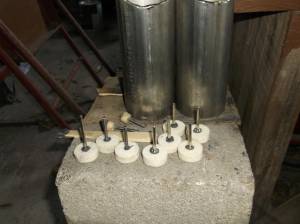 |
| Polishing wheels for Dremil type tools 21) |
Wheel Rake
Loading too much polish on the wheel smudges and doesn't help you cut the metal.
Pressing too hard while working also gathers and compresses polish into the wheel.
Use this to unload excess polish and fine metal particles from the wheel and recondition the edge.
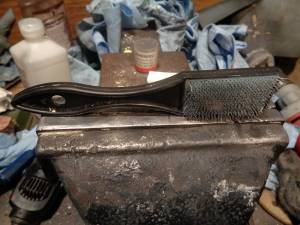 | 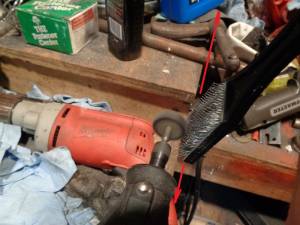 |
| Wheel rake 22) | |
Sanding
Scotch-Brite Pads
Scotchbrite pads can work faster than sandpaper.
They will contour to the workpiece, especially curves and round corners.
Start by wetting the pad with water and dish soap.
Go over a given part in one direction for the green pad, rinse thoroughly.
Then go over the part again at a 90° angle for the next finer grade pad. 23)
Repeat until you're satisfied with the finish.
- Below are three grades of Scotchbrite. These can be found online or some hardware stores.
- Your typical green (found in most kitchens)
- Red (very fine grade)
- Gray (ultra fine grade)
Here is a general chart with different Scotchbrite grades:
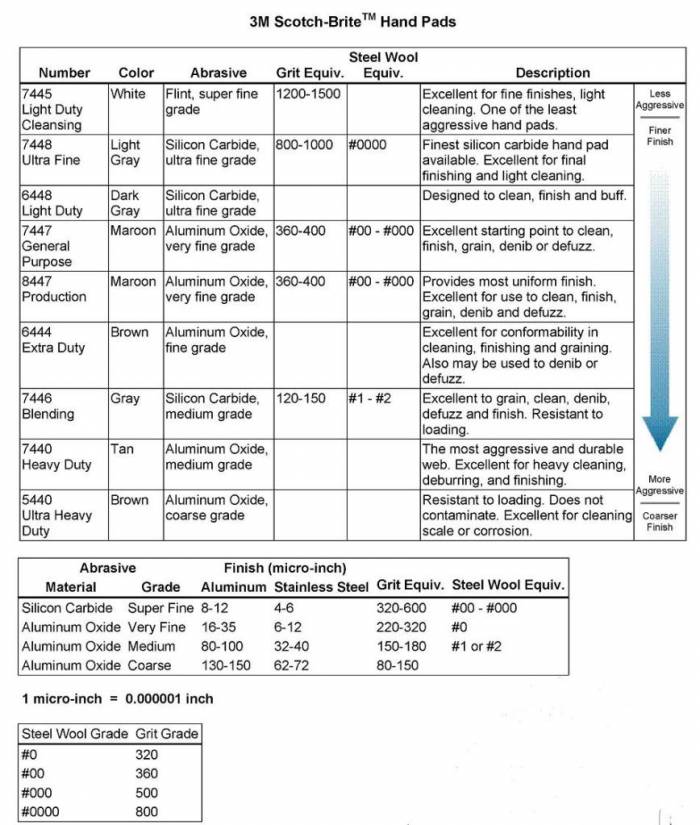 26)
26)

